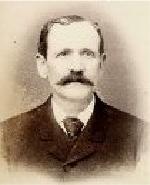South Dakota Was Admitted to the Union 123 Years Ago Today
South Dakota Flag
 |
| South Dakota State Capital. Photo courtesy of Chad Coppess, SD Department of Tourism — in Pierre, |
After controversy over the location of a capital, the Dakota
Territory was split in two and divided into North and South in 1889.
Later that year, on November 2, North
Dakota South
Dakota Union as
the 39th and 40th states. This vast territory was one of the last American
regions to be settled.
The first European explorers entered the region in 1738. At that time, at least eight Native American tribes populated the area, including the Crow,Cheyenne
The first European explorers entered the region in 1738. At that time, at least eight Native American tribes populated the area, including the Crow,
Other than fur trappers, explorers didn't venture much into
the Dakotas until the land came
under the possession of the United
States Louisiana
Purchase . The Lewis and Clark expedition spent the winter in present-day
North Dakota Black
Hills of the Sioux Reservation. That meant trouble.
After an armed resistance, the Sioux surrendered the Black
Hills to the U.S. Bismarck Pierre North
Dakota South
Dakota Union .





0 comments:
Post a Comment